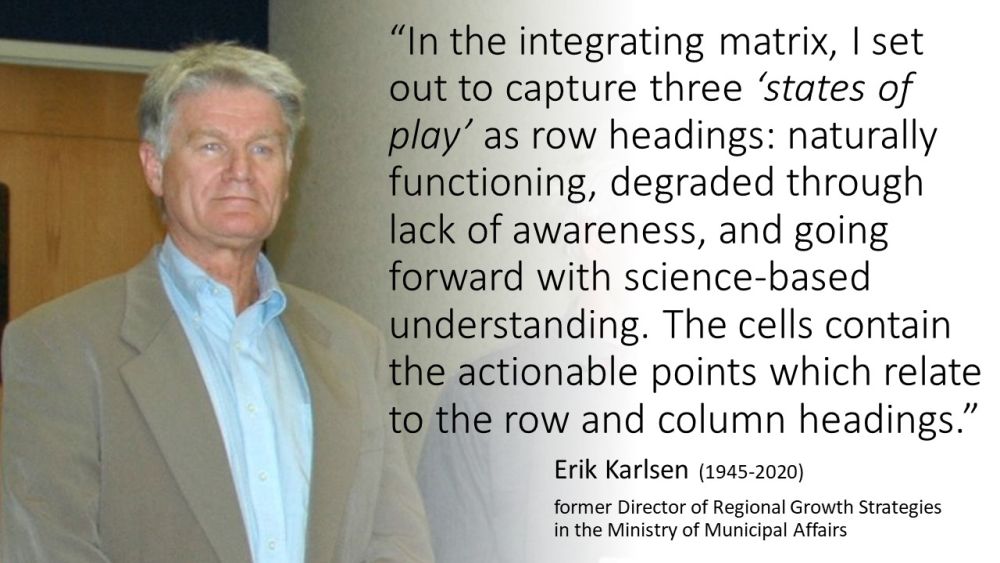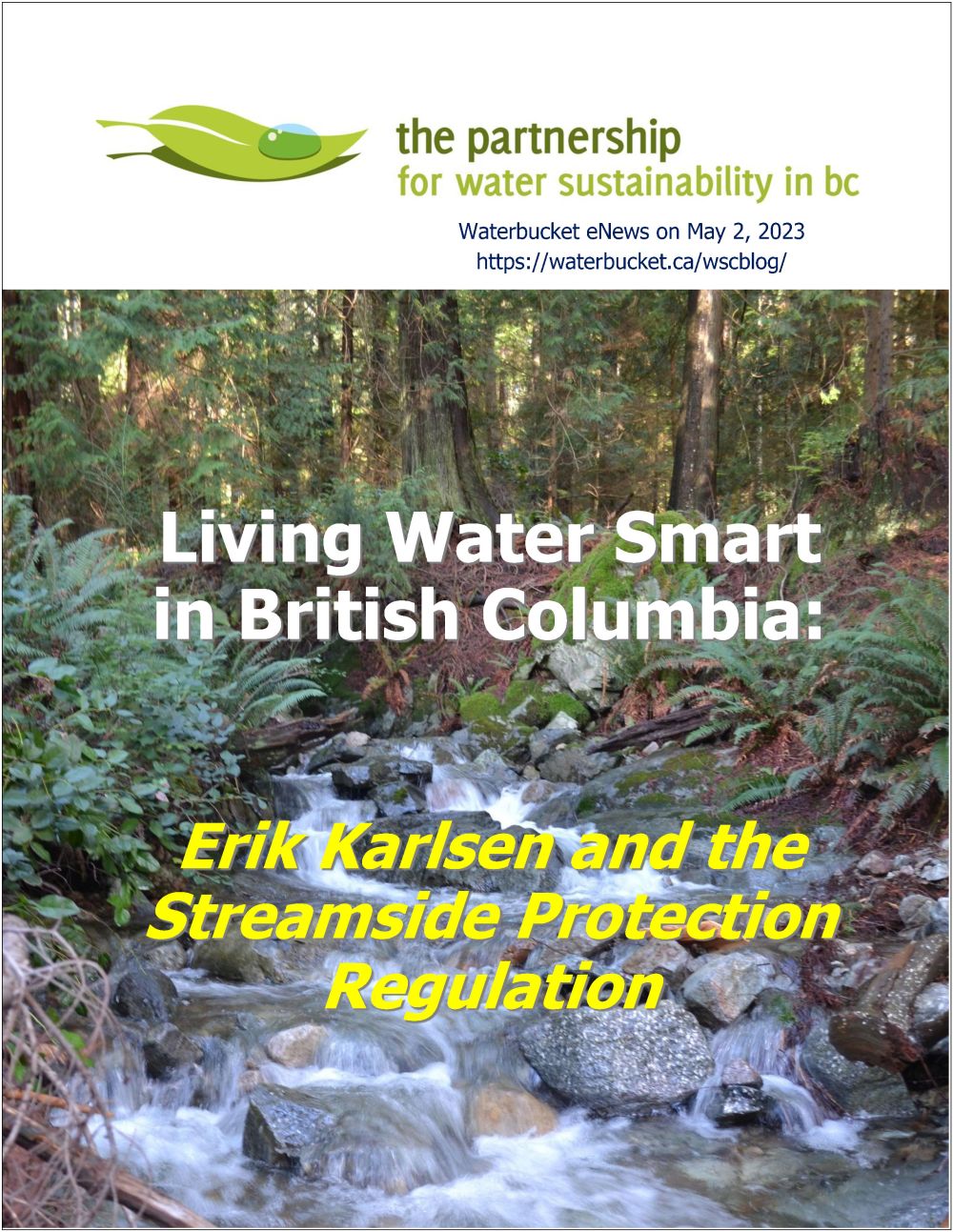LIVING WATER SMART IN BRITISH COLUMBIA: “In the integrating matrix, I set out to capture three ‘states of play’ as row headings: naturally functioning, degraded through lack of awareness, and going forward with science-based understanding,’ stated the late Erik Karlsen (1945-2020) when he presented a path forward to tackle the Riparian Deficit
NOTE TO READER:
Waterbucket eNews celebrates the leadership of individuals and organizations who are guided by the Living Water Smart vision. The edition published on May 2nd 2023 featured the late Erik Karlsen (1945-2020) and highlighted his contributions to streamside protection in British Columbia. Erik Karlsen developed a matrix that integrated the work of Ian McHarg, Daniel Pauly, Richard Horner and Chris May to provide local governments with a decision tool for riparian area protection.

Erik Karlsen and the Streamside Protection Regulation
“Erik Karlsen and I met in October 1997 at a UBCM consultation workshop when he was the Director of Regional Growth Strategies with the Ministry of Municipal Affairs. Erik was the provincial lead for the inter-ministry working group that developed the Streamside Protection Regulation which operationalized the Fish Protection Act,” stated Kim Stephens, Waterbucket eNews Editor and Partnership Executive Director.
“Erik retired early from government, in 2002. For the balance of his life, he was the Partnership’s eminence grise and my mentor. His last contribution before his health declined was the integrating matrix (above). It is a significant piece of work and is an element of Erik Karlsen’s legacy as a thought leader in BC.”

An example of what the Shifting Baseline looks like
“A stream in a natural condition is supported by a riparian ecosystem. In urban, suburban and rural settings around BC, however, riparian ecosystems have been reduced to riparian zones.”
“A riparian zone is a fragmented portion of the riparian ecosystem in developed areas. Diminution due to fragmentation results in a loss of a riparian network’s ecological services.”
“This has become the norm because the intent of the Riparian Areas Protection Regulation has been compromised over time. This loss is what Daniel Pauly describes as a ‘failure to notice change’.”
“The 2014 investigation and Striking a Balance report by the BC Ombudsperson identified ‘significant gaps between the process the provincial government had established when the Riparian Areas Protection Regulation was enacted and the level of oversight that was actually in place’.”
“Investigative Update: Striking a Balance (2022) states that ‘many of the issues we identified remain as pressing as they were in 2014; there is work ahead to ensure that the systemic issues are fully addressed‘.”
Erik Karlsen was concerned about the Ombudsperson’s findings. With development of EAP, the Ecological Accounting Process, the Partnership honours Erik’s memory and legacy by providing local governments with a path forward to tackle the Riparian Deficit.
TO LEARN MORE:
To read the complete story, download a PDF copy of Living Water Smart in British Columbia: Erik Karlsen and the Streamside Protection Regulation
DOWNLOAD A COPY: https://waterbucket.ca/wcp/wp-cont


